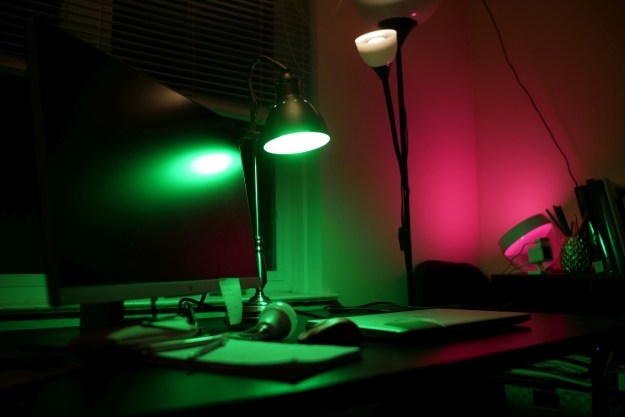
The CTIA wireless conference this week in San Francisco is bringing out companies who are looking to be the next big thing in the mobile arena, among them Seattle startup Pelago with their new location-based social discovery service Whrrl. Available in beta form now via either a standard Web browser or selected mobile phones. Whrrl offers a social discovery experience that enables people to quickly find out what their trusted friends thought of everything from restaurants to music venues and live events to stores, either while they’re on the go or just looking for something to do. Whrrl uses proprietary location-based technology that can catalog a person’s activities, detailing their paths through individual places as they go about their lives. Users can augment those histories with personal content like written reviews and photos, and share all that information with other people on their Whrrl-based social network.
“Whrrl gives friends a simple and immersive way to discover, gather, and share local information for both real-time use and later reference,” said former Amazon.com exec Jeff Holden, now co-founder and CEO of Pelago, in a statement. “Before Whrrl, the way people would answer a question like ‘Where should I go for dinner tonight?’ or ‘Where can I meet up with some friends for happy hour?’ was to ask friends for suggestions. However, this process is quite inefficient, and so people simply fall back to their few usual places rather than expanding their horizons. Whrrl takes the difficulty out of this kind of discovery, and it’s truly fun to use.”
For mobile users, Whrrl uses a patent-pending new technology called “Passive Visitization” that can chronicle the locations of Whrrl members with enough accuracy that it can figure out whether a Whrrl member actually went into a restaurant they gave a bad review, or just stood outside on the sidewalk reading a menu. While the technology seems to have some privacy implications—Whrrl offers users controls over who can see what—the technology enables users to passively record where they go and what they do, and fill in the blanks later if they like, or add comments and additional material for specific locations.
Whrrl is in beta right now, with “deep content” focuses in Seattle, San Francisco, San Diego, Los Angeles, Chicago, Austin, Atlanta, New York, Washington D.C., and Boston. The service is currently free, although in conjunction with Whrrl’s launch, American EAgle will donate one dollar fo the AE Foundation for every customer who signs up for Whrrl via ae.com.
Editors' Recommendations
- Dyson’s new AR mobile app shows where you forgot to clean
- Digital Trends’ Tech For Change CES 2023 Awards
- The best smart kitchen gadgets for new cooks
- Ups and downs of tech in 2021: A look back at the smart home
- Need to weigh yourself? ‘Empathic technology’ may soon let you do it on a rug


